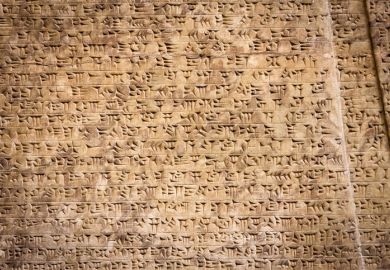By the time the Mysore-born poet A. K. Ramanujan died in 1993 in his 63rd year, he was already a paradigmatic figure in Indian writing in English, and an Indian literary and cultural studies in general. A professor of linguistics at the University of Chicago, he was a theorist who cherished the concrete and the sensuous, a cosmopolitan intellectual who also did the most, besides Robert Lowell, to bring the family into the world of poetry written in English. Moreover, as the note on the jacket of his Collected Poems puts it, "his pioneering translations of ancient Tamil poetry into modern English I permanently altered perceptions of the Indian literary map in the West I", because, before him, "ancient Indian literature was thought to be mainly Sanskritic". Yet to translate from the vernacular was not only an act of cultural retrieval for Ramanujan, but also one of self-nourishment, demonstrating that the creative life of the modern Indian English poet or writer arises from his or her multilingual consciousness, and depends upon traffic, or commerce, between the official and the vernacular tongues.
Pondering in an essay on the nuances of the question, "Is there an Indian way of thinking?", Ramanujan once wrote: "The problem was posed for me personally at the age of 20 in the image of my father I My father's clothes represented his inner life very well. He was a south Indian brahmin gentleman. He wore neat white turbans, a Sri Vaishnava caste mark (in his earlier pictures, a diamond earring), yet wore Tootal ties, Kromentz buttons and collar studs, and donned English serge jackets over his muslin dhotis which he wore draped in traditional brahmin style I "He was a mathematician, an astronomer. But he was also a Sanskrit scholar, an expert astrologer I had just been converted by Russell to the 'scientific attitude'. I (and my generation) was troubled by his holding together in one brain both astronomy and astrology; I looked for consistency in him, a constituency he didn't seem to care about, or even think about. When I asked him what the discovery of Pluto and Neptune did to his archaic nine-planet astrology, he said, 'You make the necessary corrections, that's all'. Or, in answer to how he could read the Gita religiously, having bathed and painted on his forehead the red and white feet of Vishnu, and later talk appreciatively about Bertrand Russell and even Ingersoll, he said, 'The Gita is part of one's hygiene. Besides, don't you know, the brain has two lobes?'"
I quote this passage at length not only because of its intrinsic readability, but also because of the way it embodies some of the most characteristic features of Ramanujan's poetry. First, there is the exploration of an idea, not through metaphor or analogy, but through an "image" of a member of Ramanujan's family, in this case his father. Fathers and other members of the family recur through Ramanujan's poetry - his second, and best, volume of verse is called Relations - and are inseparable from the world of poetry and myth: "Father, uncles, seven/folklore brothers I", while another poem judiciously records "anecdotes of how noisily/father bathed,/ slapping soap on his back I" Ramanujan's relations were not just subject matter for him - his sense of the family was bound up inextricably with an implicit theory, explored through his poetry and other writings, of culture, language, memory, folklore, and the connection of these with poetry itself. Thus, in the superb "Love Poem for a Wife, 1", the poet recites memories of his own family, records his (Keralite Syrian Christian) wife's memories of hers, and, deciding that the early memories of respective childhoods is one thing that man and wife can never completely communicate to each other, moves towards a meditation on culture(s), memory, and language itself:
Probably only the Egyptians had it right: their kings had sisters for queens to continue the incests of childhood into marriage.
Or we should do as well-meaning hindus did betroth us before birth, forestalling separate horoscopes and mothers' first periods and wed us in the oral cradle and carry marriage back into the namelessness of childhoods.
What is most remarkable, however, about the passage quoted from the essay is its humorous but wondering acknowledgement of the doubleness of the colonial personality, its capacity to accommodate seemingly incompatible cultures and ways of thinking in one experimental space. This sense of doubleness not only determined Ramanujan's lifelong enthusiasms as an academic and translator, but also substantially constituted the subject matter of his poetry; the poetry can be seen as a continual exploration of the mutations brought about by the mingling of cultures alien to each other; it is itself an example of one such mutation. Ramanujan's father's explanation of his peculiar ability to accommodate cultural contraries - "Besides, don't you know, the brain has two lobes?" - runs through Ramanujan's aesthetics and is echoed by this statement of the poet: "English and my disciplines (linguistics, anthropology) give me my "outer" forms - linguistic, metrical, logical and other such ways of shaping experience; and my first 30 years in India, my frequent visits and field trips, my personal and professional preoccupations with Kannada, Tamil, the classics and folklore give me my substance, my "inner" forms where, "One notices that cultures that were in separate compartments, or "lobes", for the elder Ramanujan, are already related to each other in a more fluid way in the son; it is as if the colonial, with its mutually exclusive but proximate spaces for English and Indian cultures, has changed into the postcolonial, where the meeting points between the two are more diffuse, the intermingling more complex, even more confusing: "I no longer can tell what comes from where".
This complex, confusing intermingling gives Ramanujan's verse its peculiar beauty, and its ability to be exact and unfamiliar at the same time. This dual sensibility, and the constant realignment in the sense of identity that it entails, is what animates these loveliest of lines from "Love Poem for a Wife, 2"; "my wife's always/changing syriac face,/ chosen of all faces I" here, the gentle but striking disjunction between "always", with its connotations of permanence, the familial, the culture given at birth, and "changing", denoting hybridity and process (mirrored again in the phrase "syriac face", where the exotic, the "syriac", meets the familiar, the wife's face), leads to an estrangement of perception, brought about by the play of contraries, that recalls Ramanujan's statement: "I no longer can tell what comes from where". The fact that identity and perception, self and other, what is native and what is foreign, are, for the bilingual postcolonial poet, constantly shifting categories, always open to redefinition, is referred to obliquely in the course of the same poem:
I dreamed one day that my face my own yet hers, with my own nowhere to be found; lost; cut loose like my dragnet past.
Ramanujan's concern with the give and take and the shifting boundaries between two cultural worlds continued to the end, as is evident from the later poems, presented to the reader for the first time in the Collected Poems. The book itself is a Ramanujanesque affair, compiled and edited by a group of people who happen not only to be scholars but also family and friends. The later poems are a sort of commentary on how the creative process, at least for Ramanujan, continued to be a matter of accommodating and expressing doubleness, cultural hybridity and inversion; the title of his third book of poems, Second Sight, the last published in his lifetime, is itself a pun on that doubleness of multiplicity of perception. The last poems are full of images of inversion - such as trees with their roots in the sky - which, while being metaphysical, surely have cultural resonances apposite to his work. Even Ramanujan's fascination with the androgynous Tamil god, half male, half female, can be seen to be a part of his fascination with hybrid shapes and forms. In "One More on a Deathless Theme", the question of identity comes up again:
This body I sometimes call me, sometimes mine, as if I'm someone else owning and informing this body I
In "Mythologies 2", written a year before his death, we find, "Adjust my single eye, rainbow bubble,/so I too may see all things double", and in "Contraries", he speaks of the man for whom "truths are lies / when, living by contraries,/ his roots are topsyturvy trees I" The way in which "roots" - a word that has specific, and poignant, cultural resonances - are inverted, so that they branch out and take on their own shapes, is what is disclosed to us through Ramanujan's poetic oeuvre.
Amit Chaudhuri is a novelist and visiting fellow, Wolfson College, Oxford.
The Collected Poems of A.K. Ramanujan
Author - A. K. Ramanujan
ISBN - 19 563561 2
Publisher - Oxford University Press
Price - £13.99
Pages - 289
Register to continue
Why register?
- Registration is free and only takes a moment
- Once registered, you can read 3 articles a month
- Sign up for our newsletter
Subscribe
Or subscribe for unlimited access to:
- Unlimited access to news, views, insights & reviews
- Digital editions
- Digital access to THE’s university and college rankings analysis
Already registered or a current subscriber? Login



